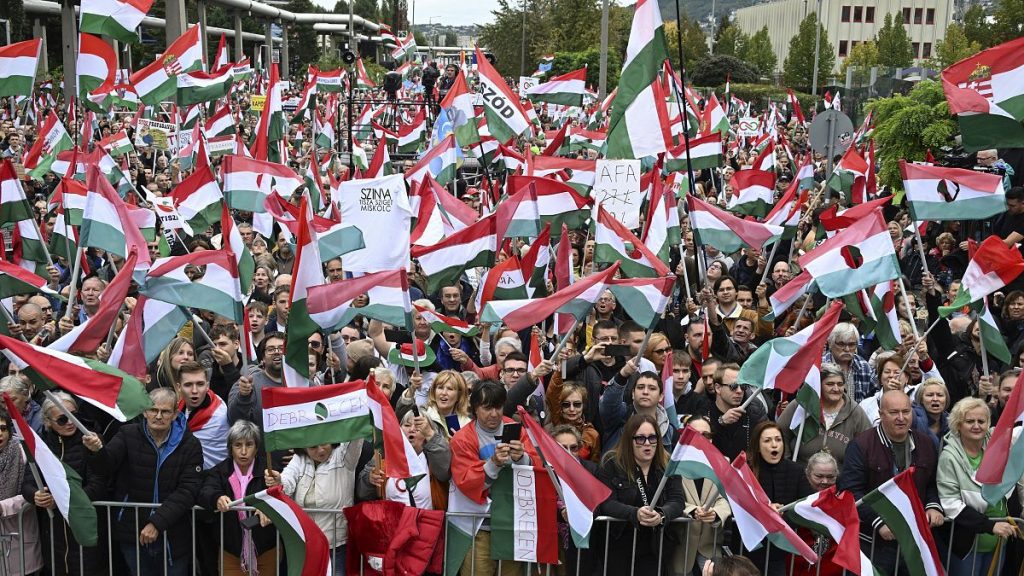Thousands of protesters gathered outside Hungary’s public media headquarters to demonstrate against what they believe to be a propaganda network operated by the nationalist government of Prime Minister Viktor Orbán. The protest was led by Péter Magyar, the head of the TISZA party, which has become a serious political challenger to Orbán’s ruling Fidesz party. Magyar, whose party received nearly 30% of the vote in EU elections and is polling closely with Fidesz, denounced the government’s “propaganda factory” as damaging to democracy. He accused the ruling party of following Adolf Hitler’s advice to repeat lies until they are believed as truth, and called for an end to the lies, nastiness, and propaganda.
Both Hungarian and international observers have raised concerns about press freedom in Hungary, warning that Orbán’s party has used media buyouts by government-connected tycoons to control around 80% of the country’s media market resources. Orbán was even named a media “predator” by Reporters Without Borders in 2021. Protester Balázs Tömpe criticized the state broadcaster MTVA as a “factory of lies” and called for voices to be raised against the unbalanced propaganda that is financed by taxpayers. Another protester, Ágnes Gera, a retired teacher from southern Hungary, lamented the censorship of dissenting voices in public media, depriving Hungarians of access to information about political alternatives.
Magyar demanded the resignation of the public media director and criticized the lack of opportunities for opposition politicians to appear on public television to communicate with voters. He also announced another demonstration on 23 October, a national holiday commemorating Hungary’s failed revolution against Soviet domination in 1956. With mounting public discontent against the government’s propaganda machine and restrictions on media freedom, Magyar’s TISZA party has emerged as a significant political force challenging Orbán’s long-standing rule. The protest against the government’s control of public media reflects growing concerns about the erosion of democracy and freedom of expression in Hungary under Orbán’s leadership.
The demonstration outside Hungary’s public media headquarters highlighted the deepening political divide in the country, with opposition figures like Magyar accusing the government of manipulating the media to spread propaganda and suppress dissenting voices. As Magyar’s TISZA party gains momentum and challenges Orbán’s dominance, the protest against the propaganda network operated by the nationalist government underscores the growing opposition to the ruling party’s control over the media landscape. With increasing calls for accountability, transparency, and media freedom, the protest represents a significant moment in Hungary’s political landscape as Magyar and his supporters demand change and confront the government’s narrative of misinformation and propaganda.
The protest against the government’s propaganda machine also reflects broader concerns about the erosion of democratic norms and the concentration of power in the hands of Orbán’s ruling party. As voices of dissent are silenced and opposition politicians are denied access to public media platforms, Magyar and his supporters are pushing back against the restrictions on freedom of expression and the manipulation of information. By demanding the resignation of the public media director and calling for greater transparency and accountability in the media sector, the protesters are advocating for a more open and pluralistic media environment that allows for diverse voices and opinions to be heard. As Hungary grapples with growing political polarization and challenges to its democratic institutions, the protest against the government’s propaganda network signifies a critical moment in the country’s struggle for media freedom and democratic governance.


